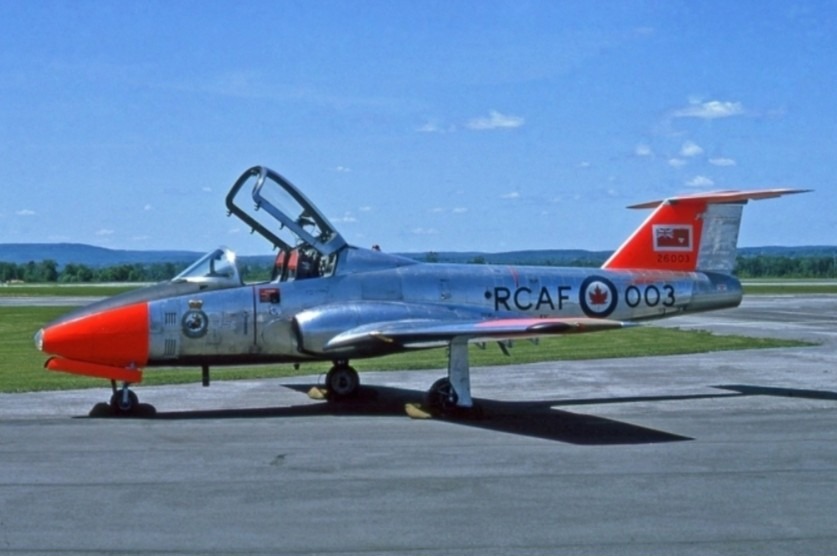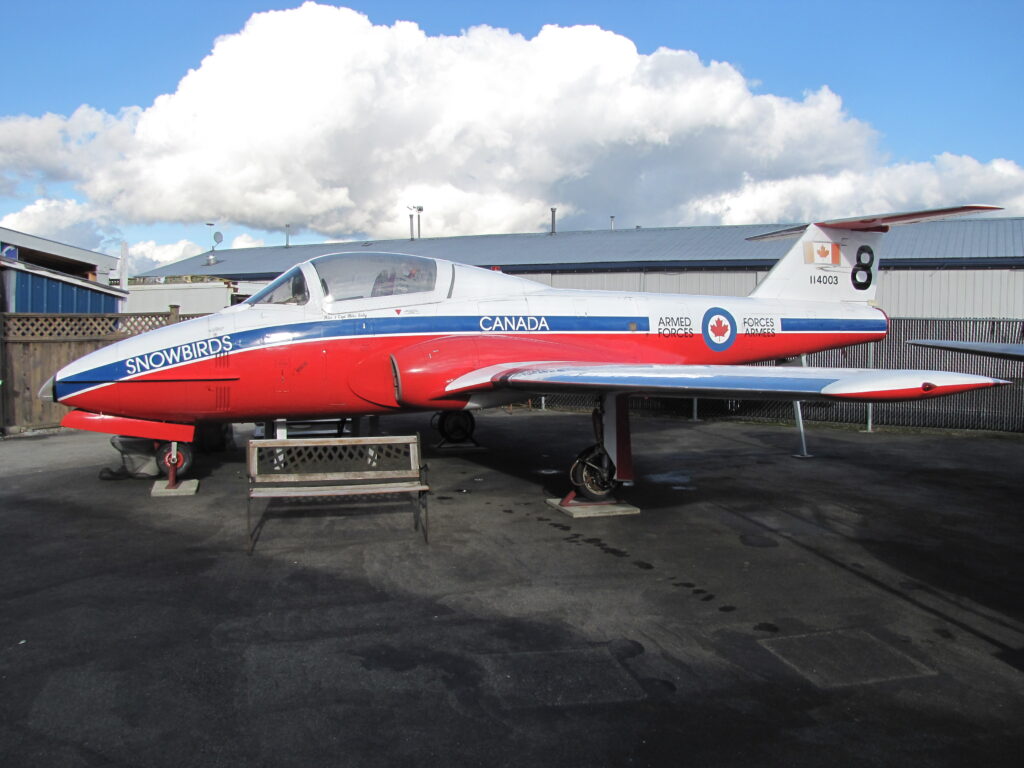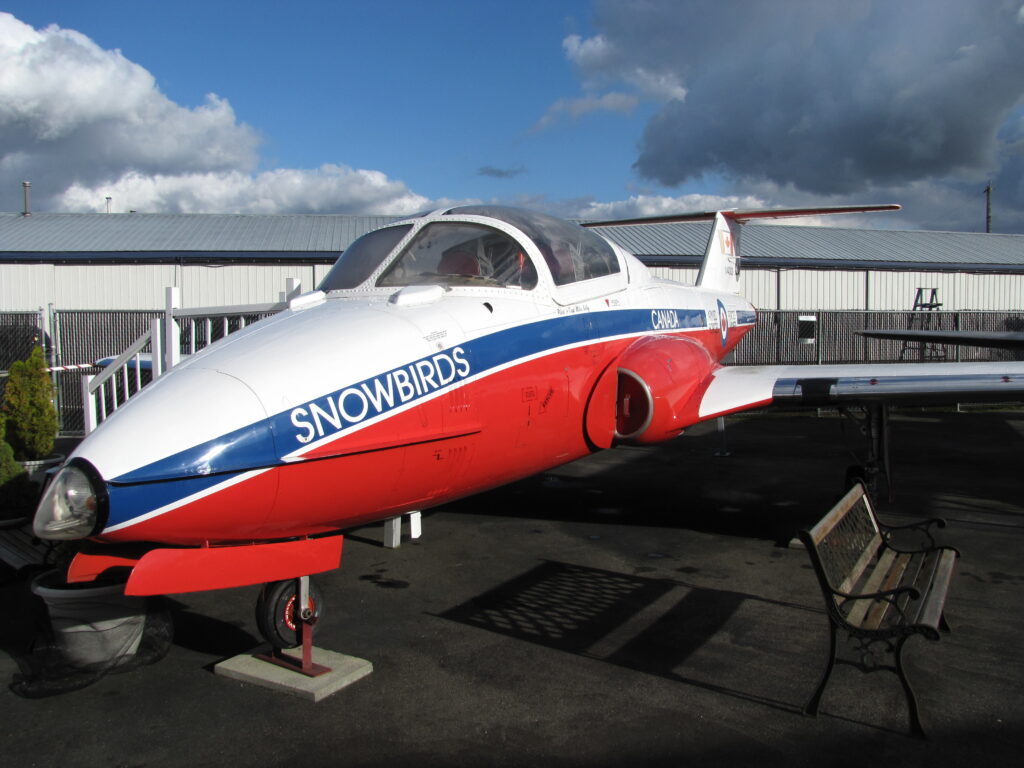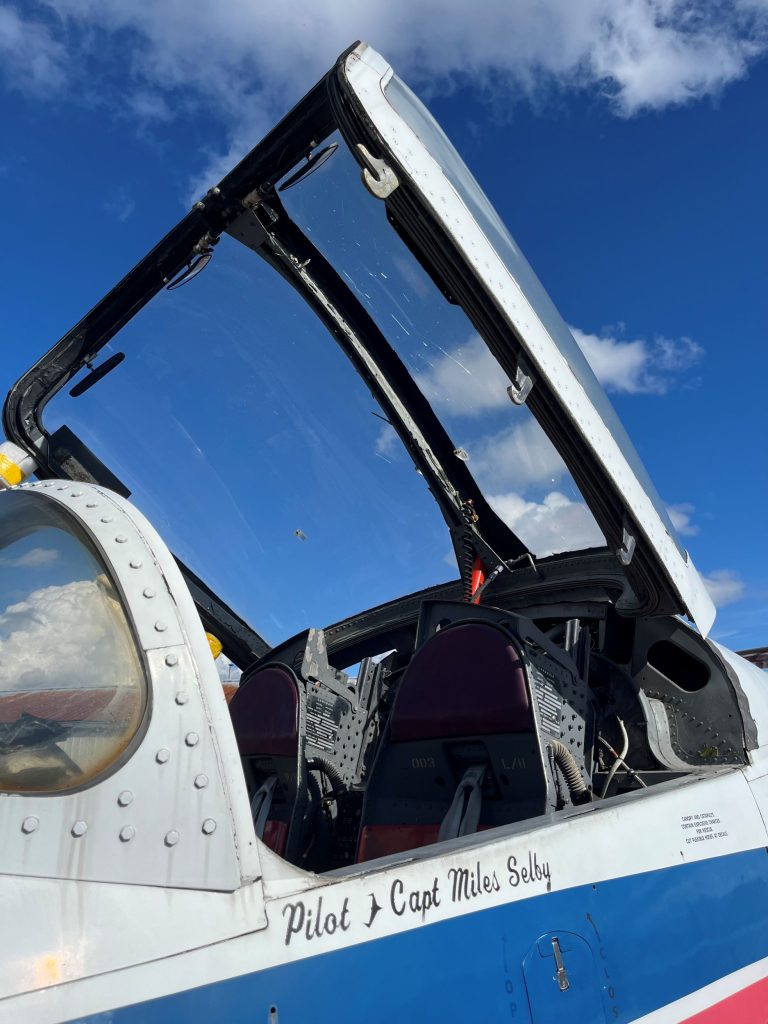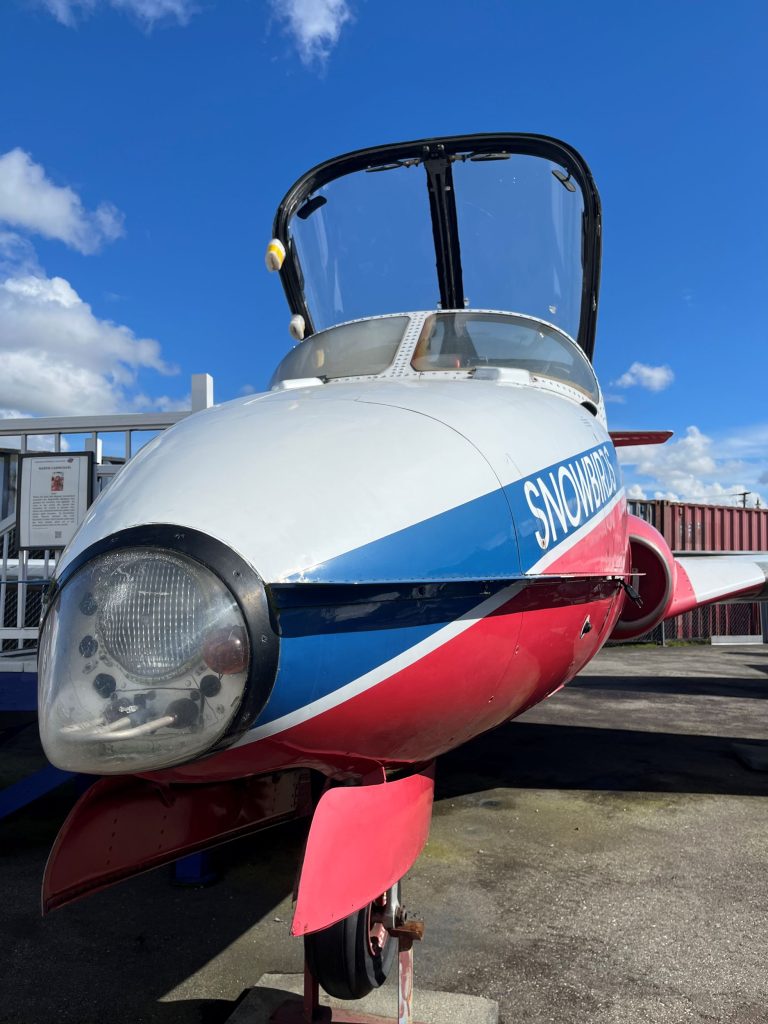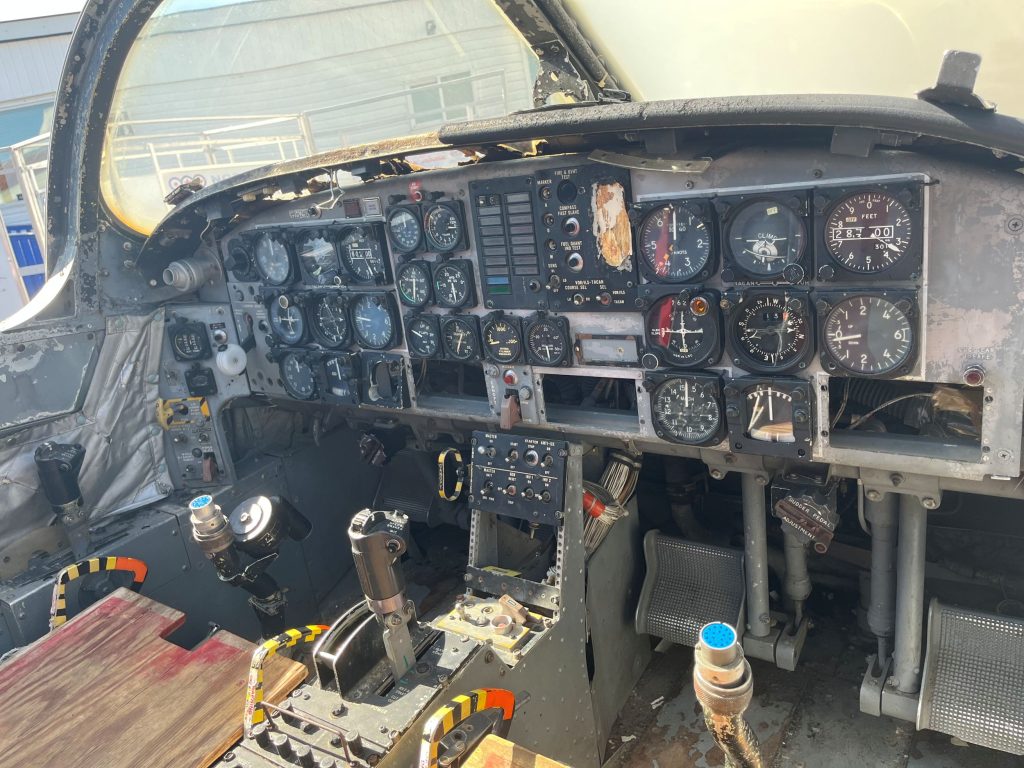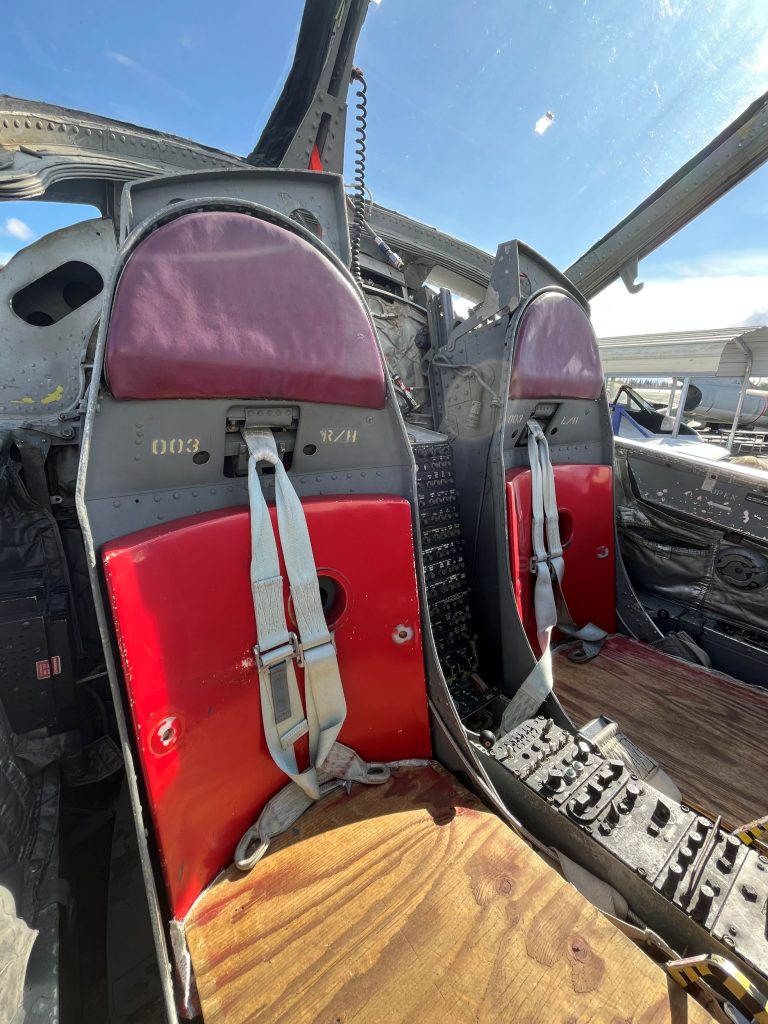
Canadair CT-114 Tutor
General Description
The Canadair CT-114 Tutor, originally designated the CL-41, was the Royal Canadian Air Force’s (RCAF) standard jet trainer from the early 1960s until 2000. Designed by Canadair as a private venture, the prototype first flew in January 1960, and a year later the Canadian government placed a significant order for the type. While the RCAF was the primary operator with 190 being delivered, another 20 Tutors, designated the CL-41G Tebuan (meaning “Wasp” in the Malay language), were exported for use by the Royal Malaysian Airforce. They served with the Malaysian Airforce from 1967 to 1986 in the ground-attack and fighter-bomber role.
The Tutor was designed as a purpose-built trainer, featuring a single turbojet engine, a low-wing layout, and a side-by-side cockpit configuration. Its simple and reliable design made it well-suited for training tasks, from elementary to advanced jet instruction. With a top speed of 782 km/h and a stall speed of just 71 knots, the Tutor combined good performance with exceptional handling.
Though the Tutor’s main role was as a trainer, its true claim to fame was its use by the world-famous Snowbirds formation aerobatic team. The first use of the Tutor by a formation aerobatic team in Canada was in 1967 when the Golden Centennaires team was created to celebrate the 100th anniversary of Canadian Confederation. The Tutors used by this team had smoke generators installed as well as having various performance-enhancing modifications. After performing 103 shows the team was disbanded and the Tutors went back to regular training duties. Then, in 1971 they were put back in the spotlight as the primary aircraft used by the newly formed Snowbirds team, formally being designated as 431 Air Demonstration Squadron in 1978. Since their inception, the Snowbirds have continued to perform at airshows all around North America, from as far south as Mexico, as far north as the Northwest Territories, and from the east coast to the west coast, amazing audiences everywhere they perform. Though retired from its training role in 2000 and replaced by the CT-155 Hawk and CT-156 Harvard II, the Tutor remained in service with the RCAF, with 26 airframes being retained for the Snowbirds aerobatic team. The planned retirement date for these remaining Tutors is set for 2030. Until that time, these remaining airframes are expected to be enough to keep the 9-plane team supplied with operational aircraft with several spares.
While many Tutor airframes have been scrapped, at least 20 examples have been preserved in museums or displayed on poles across Canada, and some survivors are even operated in flying condition by civilian owners.
Our Canadair CT-114 Tutor
Taken on strength in 1964 our Tutor, 26003, served with No. 2 “The Big 2” Canadian Forces Flying Training School at CFB Moose Jaw, Saskatchewan. In 1975 our Tutor served with 431 Air Demonstration Squadron as Snowbird 8, and then Snowbird 10 during the 1977 season. Additionally, it served as a Snowbird spare in 1974 and 1976. Afterwards it returned to service with “The Big Two” until being retired and sent for storage at Aerospace & Telecommunications Engineering Support Squadron, CFB Mountain View, Ontario in 2004.
In 2005, 14 Ex-RCAF Canadair Tutors were offered for auction to member organizations of the Canadian Aeronautical Preservation Association (CAPA). Being one of these organizations, the Canadian Museum of Flight immediately started a campaign to acquire one of these Tutors. When the public heard of our campaign the response was amazing with $9,000 raised towards securing and transporting the aircraft back to Langley.
The Tutor we specifically wanted to acquire was RCAF 26003, and it has been repainted as Snowbird 8, in the colours of Snowbird pilot Captain Miles Selby, who was tragically killed while flying an Tutor as part of the Snowbird team.
Miles Selby was born in New Westminster, BC and grew up in Tsawwassen, BC. Before joining the Canadian Armed Forces, Miles was a member of Royal Canadian Air Cadet program, with 828 “Hurricane” Squadron. After graduating from high school, he joined the Canadian Armed Forces and attending Royal Roads Military College and gaining a bachelor’s degree in science. Selby received his RCAF wings in Moose Jaw and gained the nickname “Milhouse,” a reference to the cartoon character in the show “The Simpsons,” because he was a quiet guy at the back of the class who aced all his exams. When he graduated, he was awarded the “Golden Centennaire” award which is given to the top pilot in their class. His exemplary skills and attitude then led him to become qualified on the CF-18 Hornet and he joined 416 “Lynx” Squadron, and later 441 “Silver Fox” Tactical Squadron in Cold Lake, AB. With 416 Squadron he was also stationed in Aviano, Italy to take part in peace keeping missions and close air support in the Balkans. In 2004, Miles Selby was selected to fly as Snowbird 4 with the 431 Air Demonstration Squadron. The following year, he was chosen to be one of the team’s two opposing solo performers, flying as Snowbird 8. Tragically, in the lead-up to the 2005 season, Selby was killed in a mid-air collision with one of his teammates while on a training flight.
Our Canadair CT-114 Tutor was acquired in 2005 and transported from Mountainview, Ontario to Langley, British Columbia with the help of museum volunteers. The Tutor was then painted as Snowbird 8 through the generous support of Dave Christian and his staff at AERO-TECH Graphics who donated their time, paint supplies, and expertise. It was then lifted into the museum’s display courtyard by Dick Boulter and Bear Crane Services Ltd.
The museum worked with the family of Captain Miles Selby to pick out a paint scheme and to create not only a fitting display to memorialize Capt. Selby, but to also pay tribute to all the men and women who have flown the CT-114 Tutor as members of the Canadian Armed Forces. Captain Selby along with a handful of CMF’s members have logged flying hours in our Tutor, 26003.
The Canadian Museum of Flight is dedicated to preserving Canada’s aviation heritage, from rare artifacts to the very aircraft that shaped our history. Your support allows us to restore, maintain, and share these treasures with the public, inspiring future generations to reach for the skies. Every gift makes a lasting impact — join us in keeping aviation history alive: Donate Now!

Technical Details:
- Serial: 26003, 114003
- Manufactured: Canadair, 1964
- Engine: Orenda J-85 CAN-40 turbojet with 2,950 lbs thrust
- Max Speed: 486 mph (782 km/h)
- Service Ceiling: 42,200 ft (12,863 m)
- Range: 940 miles (1,563 km)
- Empty weight: 4,895 lb (2,220 kg)
- Gross weight: 7,397 lb (3,335 kg)
- Span: 36 ft 6 in (11.1 m)
- Length: 32 ft 0 in (9.7 m)
- Height: 9 ft 4 in (2.8 m)
- Wing area: 220 sq ft (20.4 sq m)
(Photo credit: RCAF.com, this page Jim Larsen)
